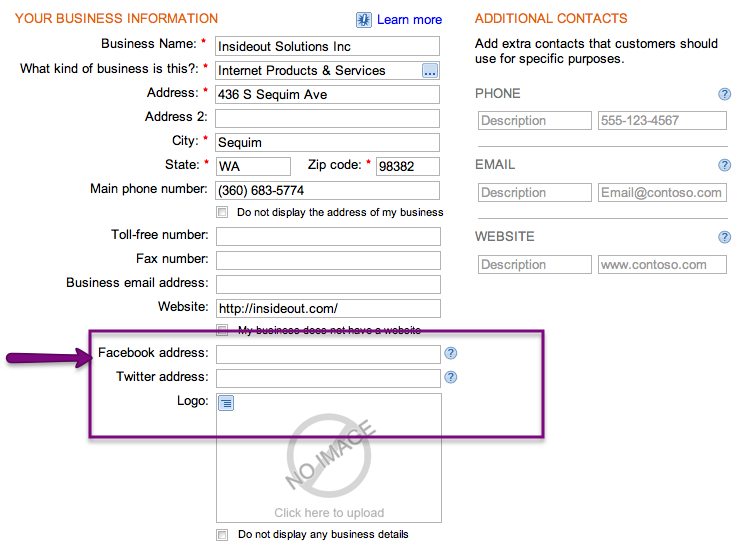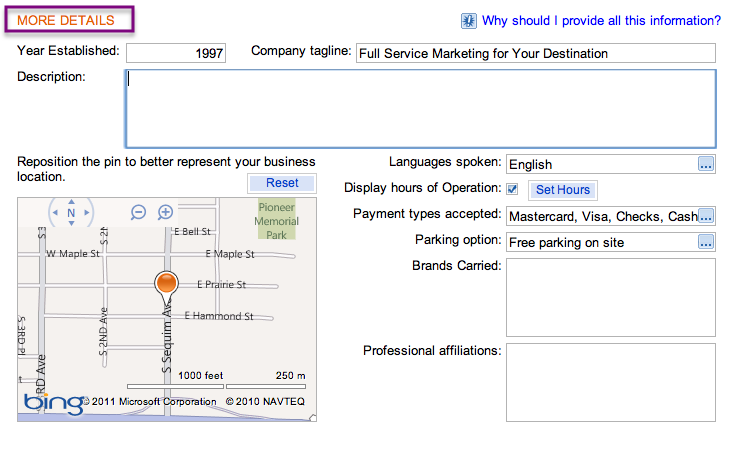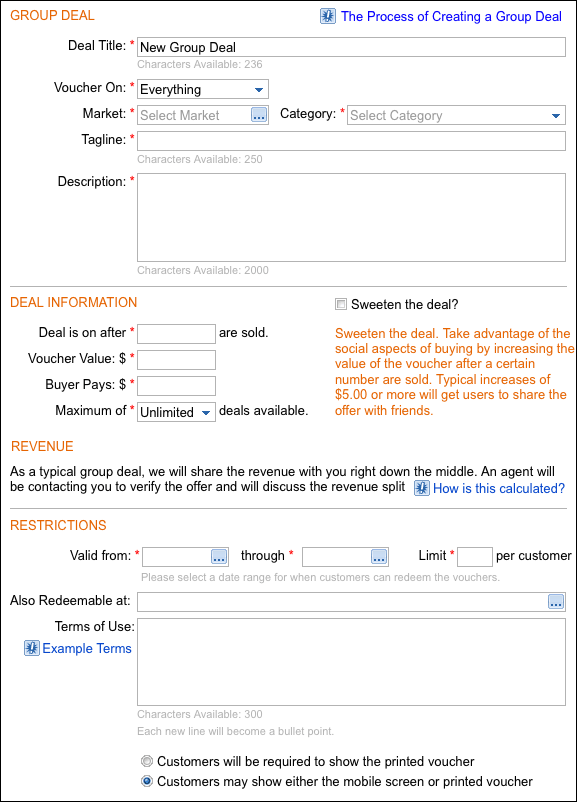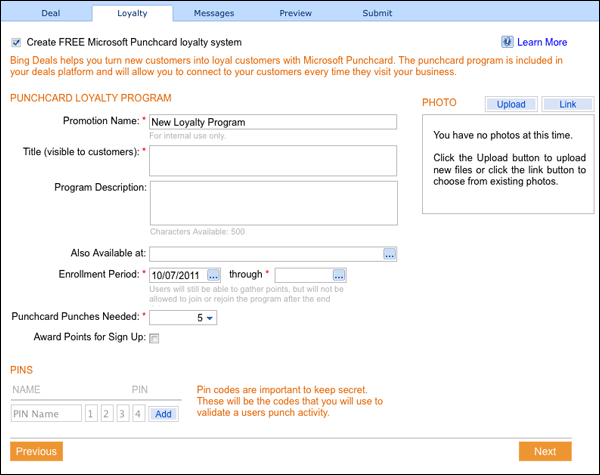Internet Marketing Weekly Feature
Many of you understand the importance of showing up on Google in location-based search, and have even claimed your Google Places listing. But how much time and attention have you given to your local listing on Bing?
If you haven’t been paying much attention to the Bing Search Engine, head over, and conduct a search, using location-based terms along with what your business does, and see where your website places on the first or second page of Bing. Just as with Google Places, you can claim (or create) and optimize your business listing.
The Bing Business Portal (formerly known as the “Local Listing Center”), allows you to create and control the online listing for your business. When you first visit the Portal, you’ll be able to either create a new Bing business listing, or manage your existing listing.
1. Adding Your Basic Business Information:
There are a few unique things to know when creating and claiming a new business listing.
Fill in the standard form with Name, Category, Address, Phone, and basic contact info.

A wonderful feature that Bing includes (and one where Google falls a bit short) is in the fields where you add your Facebook and Twitter profiles. A truly essential feature these days.
The Bing form has a special field at the bottom for a company logo, which should not be confused with photo uploads, which are separate. On the right side, Bing also lets business owners list additional phone and/or email addresses for specific purposes or departments.
2. Adding Your Business Specialties:
This is a wonderful feature. After choosing your primary category, you can also add several “business specialties.” Similar to choosing multiple categories in Google Places, Bing offers a set of sliders where you can indicate which specialties are most important. If you have a restaurant, pub, or a cooking school on the premises, these can be added to your listing.

Moving the sliders up and down to indicate how much of your enterprise is devoted to each specialty is an added bonus. The sliders will always add up to 100% as you make one specialty more important, the others become less important. This is a boon to any small business owner.
3. Photos:
You have already uploaded the logo for your business, but Bing also offers the opportunity to attach up to nine photos to your Bing local listing.
4. More Business Details:
Write a description of your business (Bing gives you quite a few characters in order to describe your business), include your hours, and position your marker correctly on the map and more.
5. Verify Your Listing:
As with Google Places, you now must verify your listing by choosing to receive a phone call or postcard from Bing. With either option,you will receive a PIN number to enter into the Business Portal, which will complete the verification process.
After your business is verified, avail yourself of these new Bing features:
Downloads, Deals and Delegation
1. Downloads:
With a verified listing, the QR code is available for download at any time via the Business Portal. There is also a full Window Sticker with your company logo and the QR code that can be downloaded (and printed) t display in the window of your business for Smartphone users to scan.
2. Deals:
As the verified owner of your small business, you can create several types of deals within the Bing Business Portal — from a percentage off or a dollar amount discount, to free offers. Set a date range for your deals, which can either be printable coupons or mobile deals that customers access using their smartphones.

The deal editor gives you a preview of your coupon or mobile deal as you make it. Daily deals can be published to your Bing business listing and to Facebook. As a bonus, businesses offering deals will be highlighted in Bing.com search results. Bing says deals should be published within 48 hours after you create them.
The Bing Business Portal has offered a basic Deals tool since April of this year. These are basic, single customer deals like dollar-based or percent-based discounts. Now, local business owners can create Group Deals that trigger only when a certain number of customers buy. The business owner can create the deal and establish all terms/requirements right inside the BBP.
Virtual Punchcards (Loyalty Offers):
Another new tool in the Bing Business Portal gives local business owners the opportunity to start a loyalty program using what you might call, “virtual punchcards.” Currently, this is only available in conjunction with the Group Deals program, but Bing says it may consider separating the two if there is enough demand from local business owners who only want to use the loyalty program tool.
In order to qualify to use the loyalty program, customers must own a smartphone. The customer joins a merchant’s program by scanning a QR code and, once in the program, the customer re-scans the QR code to get a‚”punch” from the business with each visit/purchase.
As you use your Bing Business Portal to setup a loyalty program, Bing will automatically create printable support materials; a PDF sign with the QR code for posting in your business, as well as an additional PDF with step-by-step instructions for the business owner to share with staff. There are additional print options available during the creation process, including posters and table tents.
3. Delegation:
Business owners can invite others (like their local marketing consultants or business partners) to have access to their Business Portal. There are extra controls, you can enable, like allowing the invited user to have content editing power or the ability to add extra users.
Final Thoughts:
Bing says the Business Portal is a beta product, but already, there are several valuable items that Google just isn’t matching. However, there’s at least one key piece that Bing lacks and that’s the Analytics data to show user interaction with the local listing. Whereas Google gives statistics on how often their local listing was displayed, how often “actions” were taken (clicks to the business website, requests for driving directions), etc.
The closest thing to this that Bing currently offers is a page that shows how often your QR codes have been scanned by the user. I imagine this will change very soon, as Bing continues to improve the Business Portal.
Get on the Internet Marketing Weekly Feed
Subscribe to Internet Marketing Weekly from Insideout Solutions.



